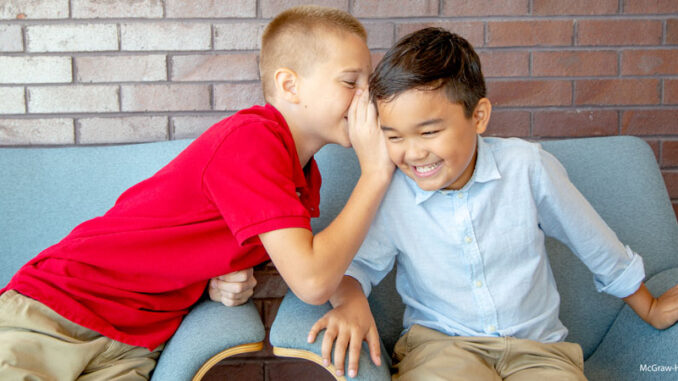
Trade Standoff With China Continues
Last year, Election Central brought you the story of the ongoing tariff standoff between China and the United States. (To recap: Trump, who feels that China has an unfair trade advantage over the U.S., has continually raised tariffs on Chinese goods coming into the United States. China, in the meantime, has retaliated by refusing to buy American products, particularly agricultural goods, which has had a damaging effect on the U.S. economy.) Now, the Trump administration has imposed a new set of tariffs–this time, on $200 billion worth of Chinese goods. China has responded predictably, by imposing its own tariffs on $60 billion worth of U.S. goods. The new tariffs will take effect on June 1.
In response to the news, U.S. stock market prices fell drastically, which is what tends to happen any time there is potential for economic instability. And economic instability happens because Chinese goods will now be more expensive for American consumers than they were before. Also, producers of goods in the U.S. are affected because they are now unable to sell as many goods to Chinese markets overseas, which could also lead to American job losses.
While the Trump administration tried to downplay the new round of tariffs, calling them a normal part of trade negotiations, China is accusing the White House of starting a tariff war. Meanwhile, Chinese President Xi Jinping has invited U.S. Trade Representative Robert Lighthizer and Treasury Secretary Steven Mnuchin to China to talk about trade and hopefully reach a workable solution. Also, later this month, it’s expected that Trump and the Chinese president will meet to discuss tariffs and trade at the G20 Summit in Japan in June.
Dig Deeper Find and list at least five items in your home that were made in China. How do you think these tariffs will affect you personally as a consumer?
Is Some Gossip Good?
Chances are, you’ve probably been told since you were young that gossip is bad. Even so, most Americans still spend about 52 minutes a day gossiping. But that’s not as bad as it sounds. A recent study revealed that most gossip is neutral–nonjudgmental–in nature. Rather than bad-mouthing people who aren’t present, most of us share information that is neither positive nor negative. Instead, it’s mostly just facts: who has experienced a major life event, who is sick, who is on vacation, etc.
So why do we gossip? Scientists say that it actually serves an evolutionary purpose. Whether positive or negative in tone, gossip is a way to spread potentially important information from person to person. It helps us form social alliances, which in the past may have been critical to survival.
The study also made another surprising finding. Despite the fact that women are usually considered to be bigger “gossips” than men, as it turns out, women and men gossip about the same amount.
So were your parents and teachers right when they told you not to gossip? Yes and no. Spreading false or malicious information about someone is never a good idea. But some gossip can be useful. For example, imagine that someone in your friend group regularly engages in unsafe behavior. Not only would hearing that information help protect you from that person, but scientists also found that hearing negative gossip about ourselves can actually encourage us to improve our own behavior–meaning that gossiping about your friend’s unsafe behavior might help pressure him or her to make better choices in the future.
Dig Deeper The scientists who conducted the gossip study gathered data from people who agreed to wear a recording device for a few days. Conduct your own study by keeping track of how many times you gossip, and for how long, in a single day. What were your findings?
The Fight Against Cyberbullying
It’s hardly news that teens sometimes use social media as a way to bully one another. But what is news is that one popular social media platform–Instagram–is trying to do something about it. Using a combination of artificial intelligence (AI) and human reviewers, Instagram is trying to eliminate–or at least, limit–bullying posts on its platform.

Instagram already has the technology in place to identify and flag certain unacceptable content, such as posts that feature nudity or are pro-terrorism. But unfortunately, bullying is a lot more subtle, and therefore much harder to detect. Some simple changes will help, such as Instagram’s proposal to hide the number of “likes” a post receives. But in order to ban bullying, one must first be able to define it, which the company is finding much harder to do. For example, even a photo of a group of friends having fun at a party could be considered bullying if the teens tag someone who wasn’t invited.
So where should Instagram draw the line? At this point, the company hasn’t decided yet. Instead, they’re setting up focus groups of parents and teens to get a better sense of what kinds of subtle bullying are happening on the platform. Once a type of bullying behavior is identified, the company sets to work creating an algorithm to flag it.
So why go to all of this trouble? While it would be impossible to eliminate all negative interactions on social media, Instagram–with its high percentage of teen users–feels a responsibility at least to try. Also, because teens often keep instances of cyberbullying secret from the adults in their life out of embarrassment or fear of punishment, it’s up to the people who were responsible for helping to create cyberbullying in the first place to be the ones to try to fight it.
